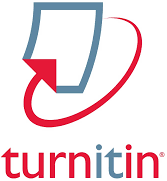Water Quality Management in Vaname Shrimp (Litopenaeus vannamei) Farming at PT Bumi Harapan Jaya
DOI:
https://doi.org/10.29303/jfh.v3i2.5621Keywords:
Cultivation, Vaname, Water Quality ManagementAbstract
The increase in vaname production is carried out to meet market demand which continues to increase from year to year, so that various strategies are carried out in vaname cultivation. Besides of feed quality and disease prevention, water quality management is an effort to regulate and manipulate environmental conditions so that optimal range can supports shrimp growth, until good shrimp quality is obtained. Location of the activity at PT Bumi Harapan Jaya where has produced a lot of shrimp with the best quality, so it is necessary to know how water quality management is applied there. The method is carried out descriptively, namely describing what is done according to conditions in the field. The results of activities in managing water quality are starting from the preparation of ponds, seeds and good water sources. Water quality management during vaname shrimp rearing activities applies measurements of physical, chemical and biological parameters, where physical parameters such as temperature and brightness are maintained in the range of 27-30°C and 30-45 cm. In addition, the pH remains in the normal range of 7.7-8 and salinity 30-34 ppt. Carrying out regular water quality checks is the key to good water quality management, in addition to that, regular siphoning is also necessary to avoid high ammonia content in the culture water.
Downloads
Published
Issue
Section
License
1. The copyright of this journal belongs to the Editorial Board, based on the author's consent, while the moral rights of the publication belong to the author(s).
2. The formal legal aspect of journal accessibility refers to the same Creative Common Attribution + Noncommercial + ShareAlike (CC BY-NC-SA), implying that publication can be used for non-commercial purposes in its original form.
3. Every publication (printed/electronic) is open access for educational, research and library purposes. In addition to the objectives stated above, the editorial board is not responsible for copyright infringement















